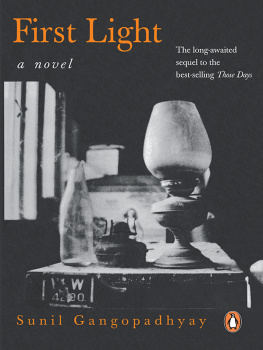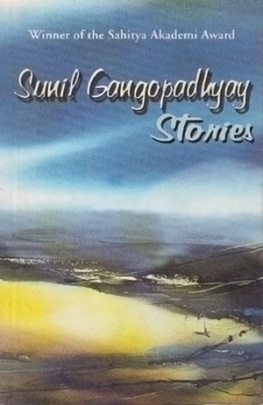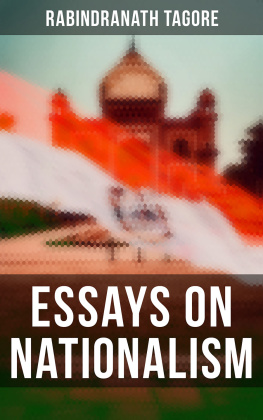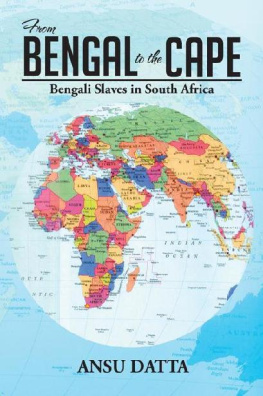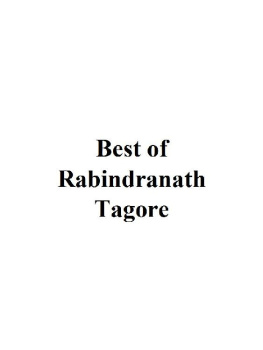Born in 1934 in Faridpur, now in Bangladesh, Sunil Gangopadhyay came as a refugee to Calcutta in 1947, following the partition of India. The family suffered extreme poverty initially and Sunil, though only in his teens, was forced to find employment. He still managed to continue his education, taking his Masters degree from Calcutta University.
Sunil Gangopadhyay began his literary career as a poet, starting the epoch-making magazine, Krittibas, in 1953. Storming into the field of the novel with the trendsetting Atma Prakash (1966)a powerful portrayal of the frustration and ennui of the youth of Calcuttahe soon rose to become the leading and most popular novelist of Bengali. Sei Samai (1982), which won him the Sahitya Akademi Award, Purba Paschim (1989) and Pratham Alo (1996) are among his best novels.
Aruna Chakravarti took her Masters and Ph.D. degrees in English Literature from the University of Delhi. She has held the post of Reader in Janki Devi Memorial College, one of the affiliated colleges of the university, for many years and is, at present, its principal. She is also an author and translator of repute.
List of Characters
The Kingdom of Tripura
Maharaja Birchandra Manikya - King of Tripura
Bhanumati - his Queen Consort
Monomohini - Bhanumatis niece
Radhakishor - Birchandras eldest son
Samarendra - another son
Bharat - Birchandras illegitimate son
Radharaman Ghosh - the kings secretary
Shashibhushan Singha - tutor to the princes
Mahim Thakur - the kings bodyguard
The Singhas of Bhabanipur
Bimalbhushan Singha - Shashibhushans eldest brother
Monibhushan Singha - Shashibhushans second brother
Krishnabhamini - Bimalbhushans wife
Suhasini - Monibhushans wife
Bhumisuta - a bondmaid
The Thakurs of Jorasanko
Maharshi Debendranath Thakur - founder of the Adi
Brahmo Samaj
Dwijendranath - his eldest son
Satyendranath - his second son
Jyotirindranath - his fifth son
Rabindranath - his youngest son
Balendranath Satyaprasad - his grandsons
Gaganendranath Abanindranath - his grandnephews
Gyanadanandini - Satyendranaths wife
Kadambari - Jyotirindranaths wife
Mrinalini - Rabindranaths wife
Surendranath - Satyendranaths son
Indira nicknamed Bibi - his daughter
Pramatha Chowdhury - Bibis husband
Madhurilata nicknamed Beli - Rabindranaths eldest daughter
Renuka - his second daughter
Meera - his youngest daughter
Rathindranath - his elder son
Shomi - his younger son
Swaranakumari - Debendranaths daughter
Janakinath Ghoshal - her husband
Sarala - their daughter
Akshay Chowdhury - Jyotirindranaths friend
Ashutosh Chowdhury - Pramathas brother and
Rabindranaths friend
The Theatre
Girish Ghosh - an actor, director and playwright
Binodini - a famous actress
Amritalal nicknamed Bhuni Ardhendushekhar - actors
Mustafi nicknamed Saheb Amarendranath Datta nicknamed Kalu - an actor, director and producer
Pratapchand Jahuri Gurumukh Rai Mussadi - wealthy Marwari financiers
Gangamoni nicknamed Hadu - an actress
The Freedom Fighters
Aurobindo Ghosh - a scholar and a poet
Barin - his brother
Satyendranath - his uncle
Rajnarayan Bosu - his maternal grandfather
Hemchandra Kanungo - terrorists, along with Barin Amitbikram and Satyendranath
Jatin Bandopadhyay - leader of the group
Kuhelika - his sister
Balgangadhar Tilak - an eminent freedom fighter
Count Okakura - a Japanese scholar
The Hindu Revivalists
Sri Ramkrishna Paramhansadev - priest of the temple at Dakshineswar
Naren Datta alias Swami Vivekananda, Brahmananda, Saradananda, Balaram Bosu - Ramkrishnas disciples
Margaret Noble alias Sister Nivedita - Vivekanandas disciple
Joe Macleod Ole Bull - Vivekanandas friends
Others
Mahendralal Sarkar - an eminent physician
Jagadish Bose - a scientist
Abala Bose - his wife
Shibnath Shastri - a Brahmo, founder of the Sadharan Brahmo Samaj Dwarika
Jadugopal Irfan - Bharats friends
Basantamanjari - Dwarikas mistress
Banibinod Bhattacharya - a priest
Introduction
In 1882 Rabindranath, the young scion of the Thakurs of Jorasanko, published a slim volume of poems entitled Bhagna Hriday. Though the poet was practically unknown, even in Bengali, the book found its way, somehow, into the royal palace of Tripura. The maharaja, who had recently lost his queen consort, read the poems and was so moved by them that he sent an emissary to Calcutta bearing gifts and a citation for the poet. This historical event is recorded in the opening chapters of Sunil Gangopadhyays Pratham Alo (First Light).
In a critical way, this hook is a sequel to the authors earlier novel Those Daysa transcreation in English of the award-winning Sei Samai. They are both mega-narratives designed on the same lines and the reading of one is enriched by the other. But the two novels are structured as discrete texts linked by some common themes and characters. The undeniable resemblance between the two gives rise, inevitably, to the speculation of whether or not First Light brings to a conclusion the story of Those Days. It also opens up questions regarding the extent of history and historical authenticity in the novel. It might he profitable to open the introduction by attempting to answer some of these questions.
The events of Those Days, actual and imagined, took place between 1840 and 1870a period which witnessed a unique movement in Bengal, the highlights of which were the germination and slow stirring into life of a social and religious consciousness and the emergence of a middle class that idealized British rule and used its support to usher in considerable change in Hindu society. This movement, which came to be known as the Bengal Renaissance, spread gradually to encompass the whole of India. Evoking time as protagonist and characters, historical and fictional, as bit players in the destiny of a nation, Sunil Gangopadhyay created a modern epic offering valuable insights into the era that saw this phenomenon

